[PHOTOS] APEX at CES: Tech That Could Change PaxEx
Share
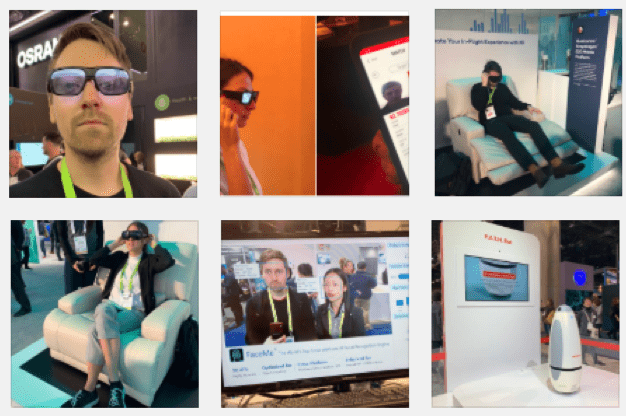
Gadgets and gizmos are aplenty at CES this week. APEX Media news editor Ari Magnusson and digital editor Kristina Velan were on the lookout for technology that could shape the future airline passenger experience.
Vuzix & ST Engineering’s Facial Recognition Glasses
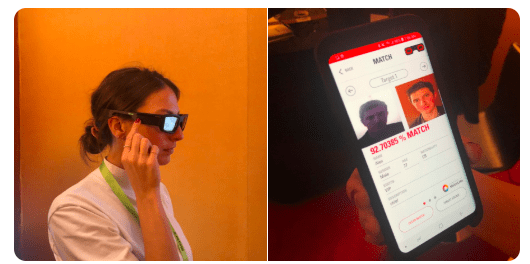
Vuzix and ST Engineering launched biometric-enabled smartglasses at CES this week. The Vuzix Blade glasses are embedded with facial recognition technology, developed by ST Engineering’s Electronics division, that enables non-intrusive identification. The results of the biometric scan are revealed via either augmented reality integrated in the glasses or an app on a separate device.
One use case of this platform as a service (PaaS) is to help flight attendants identify passengers and offer a more personalized in-flight experience. “It sends passengers the message that the airline remembers you and treasures you as a customer,” ST Engineering program manager Donald Heng told APEX Media, adding that the company is in discussions with several airlines regarding this augmented intelligence solution.
SATS, the chief ground-handling and in-flight catering service provider at Singapore’s Changi Airport, is using Vuzix’s M300 smartglasses to scan QR codes on baggage and cargo containers to receive real-time loading instructions and improve the baggage handling process.
CyberLink FaceMe

Biometric technology firm CyberLink showcased FaceMe, its new artificial intelligence-based facial recognition engine. It is powered by deep learning and neural network algorithms and can track customer traffic and analyze demographics such as gender, age and emotions. The platform doesn’t require any connectivity to the web because the facial recognition processing is done on local hardware.
“Almost all other AI-based solutions required some connection on the web, which is potentially a big security issue,” said Richard Carriere, CyberLink’s senior vice-president and general manager, global marketing, US. “For example, on a plane in the air, where connectivity might not be necessarily possible, you can have a completely closed system so you can start monitoring passengers who get stressed out on board or people who are agitated.”
SkyLights’ Allosky VR Headset Powered by Qualcomm
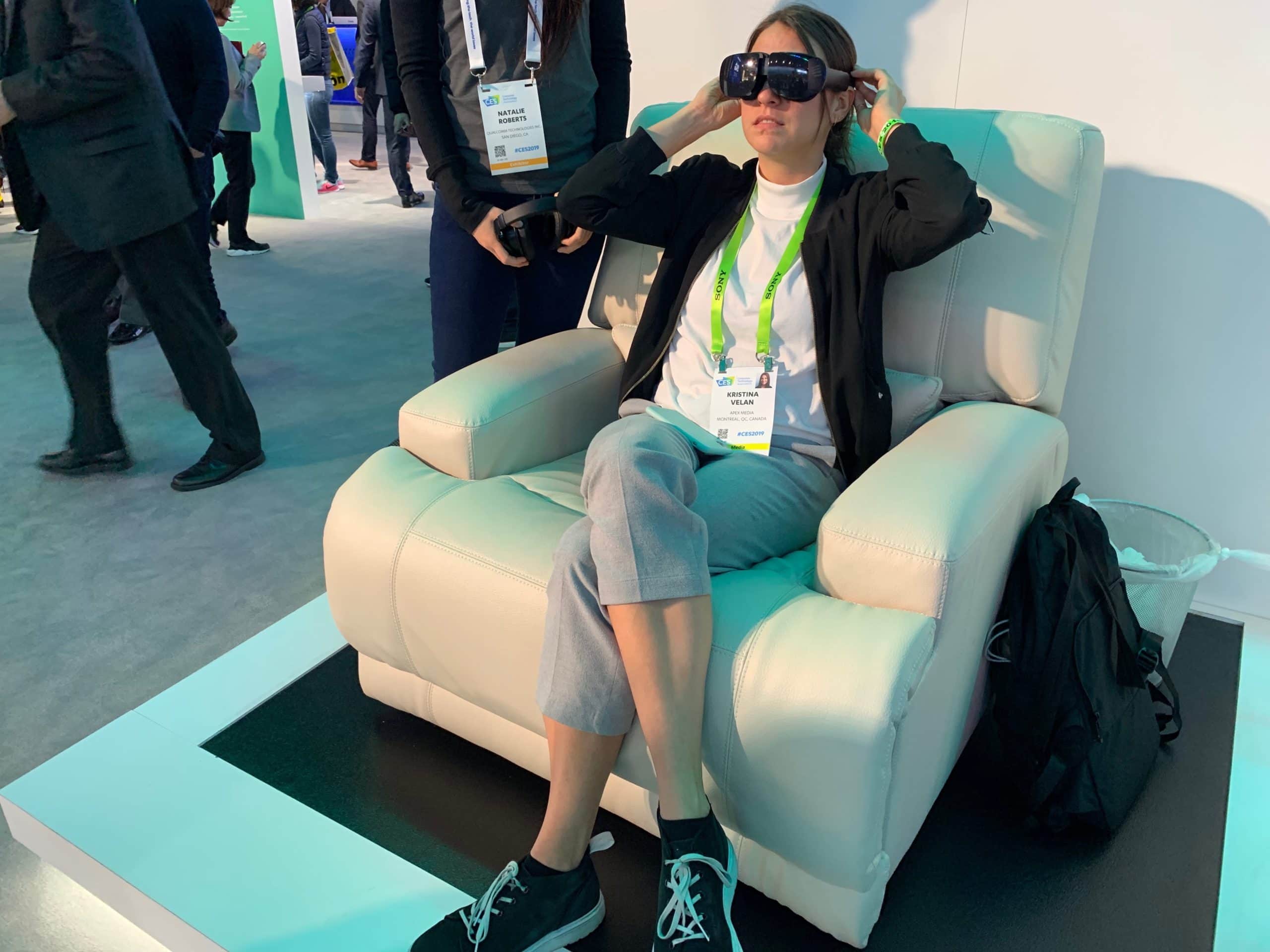
SkyLights’ Allosky headset is on display at Qualcomm’s CES booth this year. The telecommunications equipment company’s Snapdragon processor powers the headset’s high-res display, which screens 2-D, 3-D and forward-facing 360-degree films on a Full HD cinema screen. Alaska Airlines was the first domestic airline to offer the Skylights Allosky headset in first class as part of a limited trial period.
Honda P.A.T.H.Bot
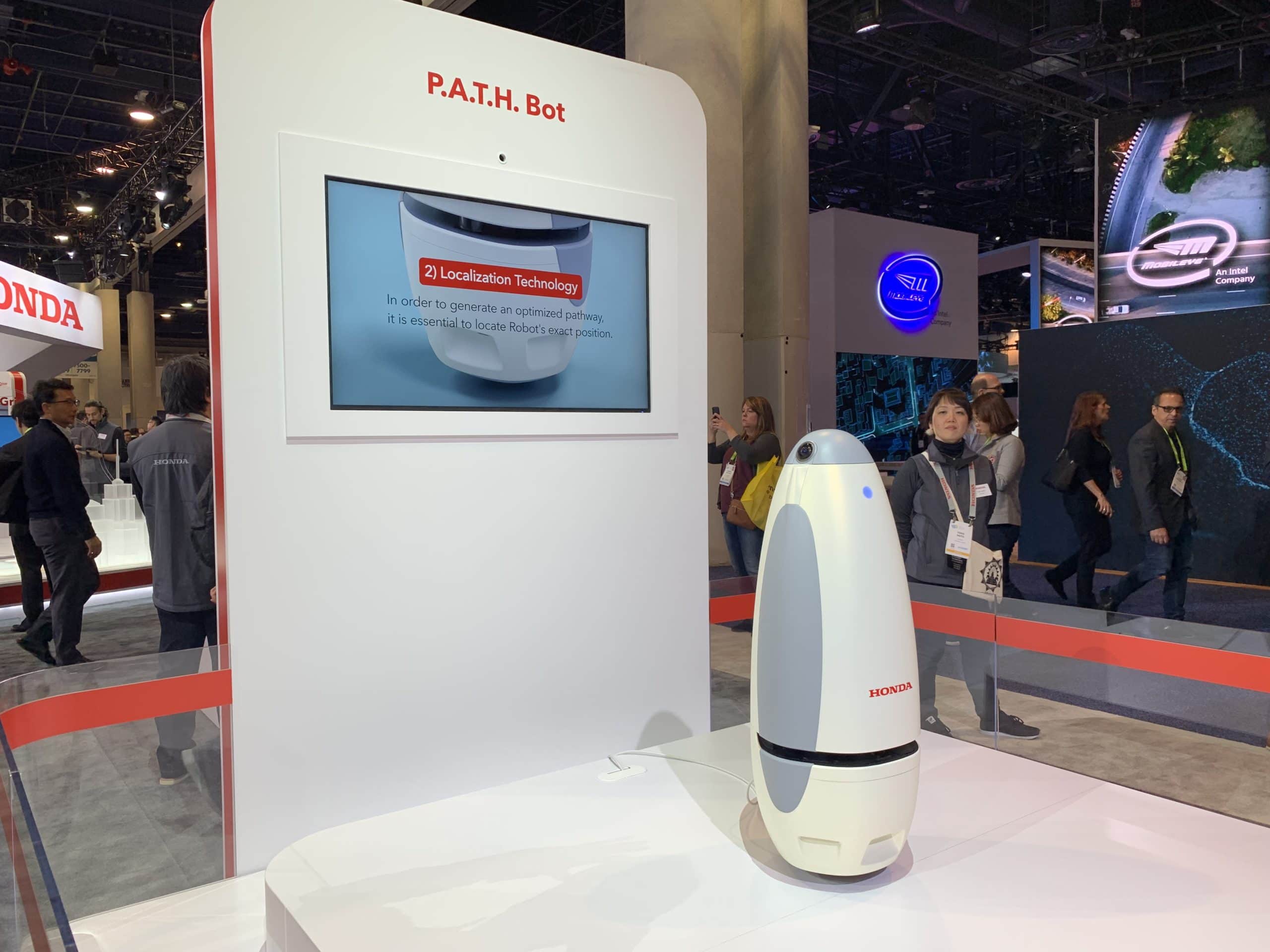
The Honda P.A.T.H. (Predicting Action of the Human) Bot is an AI-equipped robot that recognizes its surroundings. In addition to being able to select the most efficient route and move from one place to another while avoiding obstacles, it is Honda’s first robot that will be capable of interacting with members of the public.
Kenichiro Sugiyama, a developer of P.A.T.H. Bot for Honda, spoke to APEX Media about its potential uses. “It can be used as a moving camera for security purposes. It’s still at the proof of concept stage, but we are collaborating with one airport and there are several others that have expressed interest,” he said. “It can be used as a guiding robot and we intend to put voice recognition software into it.” Honda is aiming to launch P.A.T.H Bot in time for the 2020 Tokyo Olympics.
OSRAM LED Glasses
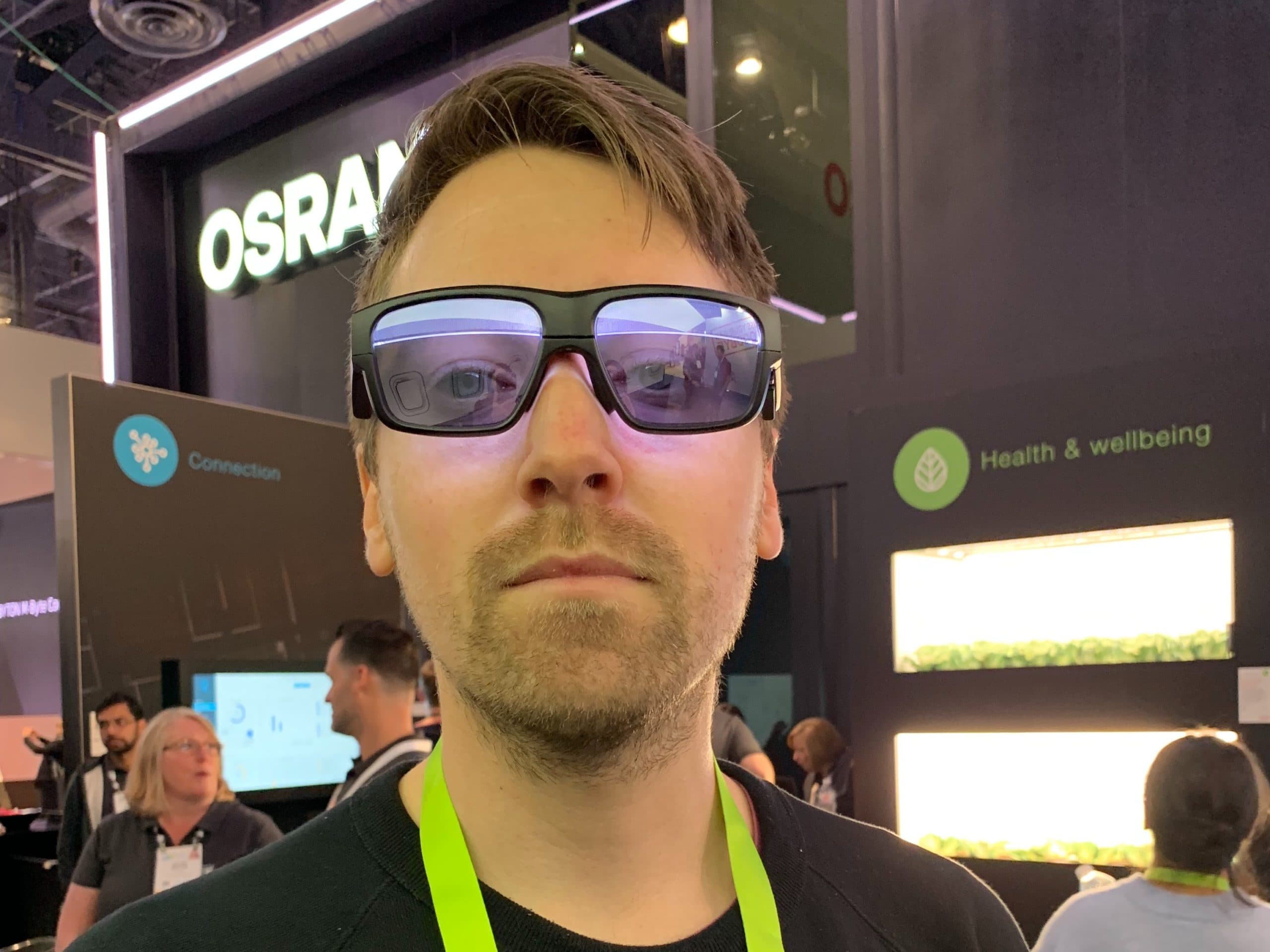
German lighting manufacturer OSRAM has developed a pair of LED glasses that use human-centric lighting technology to help combat jet lag by either boosting alertness or encouraging restfulness. “The [alert mode’s] blue light is centered right at the peak of your circadian response,” said Dr. Lori Brock, head of Innovation, Americas, OSRAM when speaking to APEX Media. “It suppresses your melatonin production and this makes you naturally more alert and gives you an energizing boost.” The device also offers an app-controlled jet lag mode. “If you know where you’re going and on what date, how long you’re going to be there, you can actually program the glasses and it will tell you when to put them on in order to mitigate jet lag and shift your circadian rhythm toward your destination,” she said.


